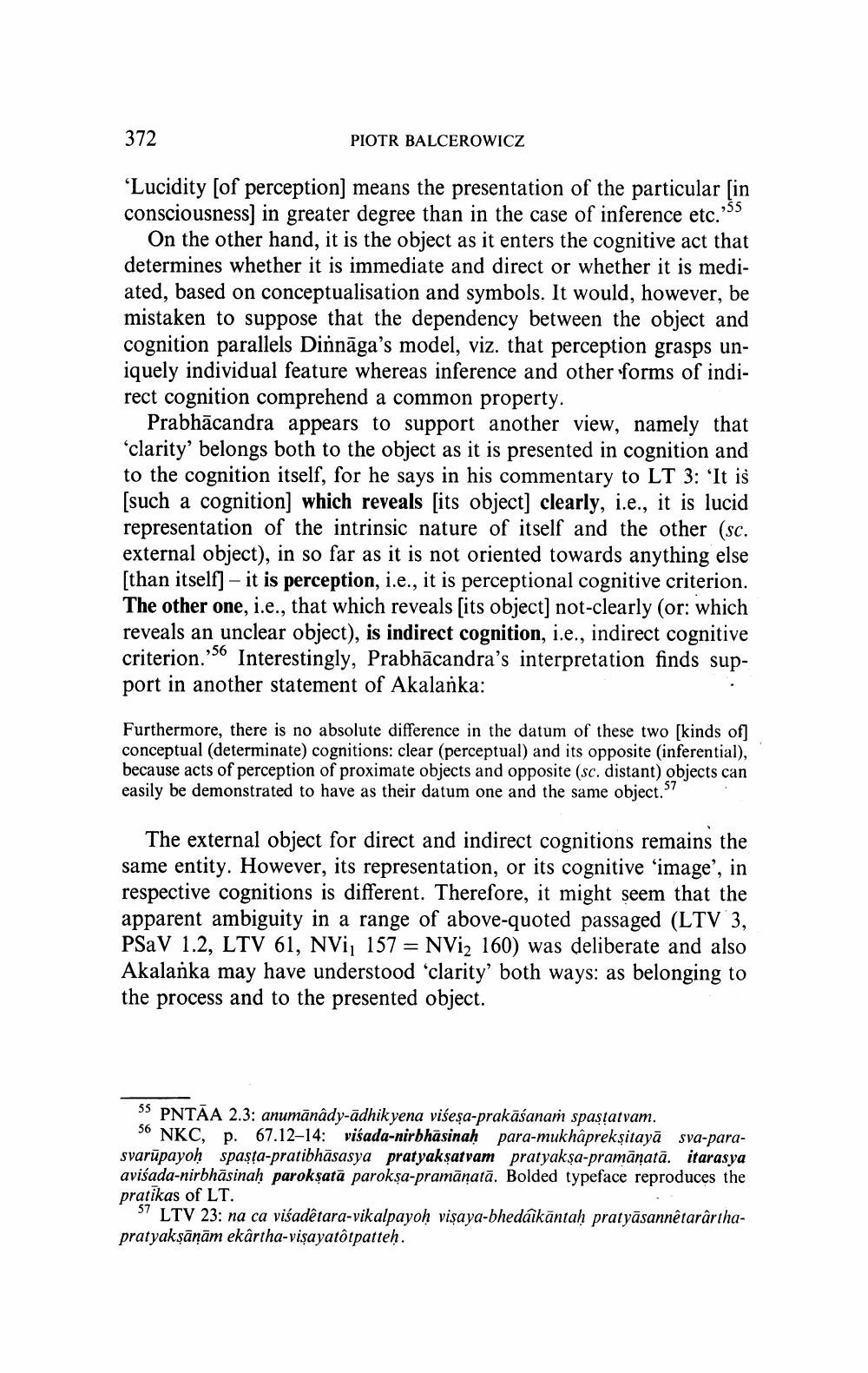________________
372
PIOTR BALCEROWICZ
'Lucidity [of perception] means the presentation of the particular sin consciousness) in greater degree than in the case of inference etc.)
On the other hand, it is the object as it enters the cognitive act that determines whether it is immediate and direct or whether it is mediated, based on conceptualisation and symbols. It would, however, be mistaken to suppose that the dependency between the object and cognition parallels Dinnāga's model, viz. that perception grasps uniquely individual feature whereas inference and other forms of indirect cognition comprehend a common property.
Prabhācandra appears to support another view, namely that 'clarity' belongs both to the object as it is presented in cognition and to the cognition itself, for he says in his commentary to LT 3: 'It is (such a cognition) which reveals sits object] clearly, i.e., it is lucid representation of the intrinsic nature of itself and the other (sc. external object), in so far as it is not oriented towards anything else [than itself] - it is perception, i.e., it is perceptional cognitive criterion. The other one, i.e., that which reveals [its object] not-clearly (or: which reveals an unclear object), is indirect cognition, i.e., indirect cognitive criterion.956 Interestingly, Prabhācandra's interpretation finds support in another statement of Akalanka:
Furthermore, there is no absolute difference in the datum of these two [kinds of] conceptual (determinate) cognitions: clear (perceptual) and its opposite (inferential), because acts of perception of proximate objects and opposite (sc. distant) objects can easily be demonstrated to have as their datum one and the same object.
The external object for direct and indirect cognitions remains the same entity. However, its representation, or its cognitive 'image', in respective cognitions is different. Therefore, it might seem that the apparent ambiguity in a range of above-quoted passaged (LTV 3, PSaV 1.2, LTV 61, NVi, 157 = NVi2 160) was deliberate and also Akalanka may have understood clarity' both ways: as belonging to the process and to the presented object.
55 PNTĀA 2.3: anumānâdy-ādhik yena visesa-prakāśanam spastatvam.
56 NKC, p. 67.12–14: visada-nirbhāsinaḥ para-mukhâprekşitayā sva-parasvarūpayoḥ spasta-pratibhāsasya pratyak satvam pratyakşa-pramāṇatā. itarasya avisada-nirbhāsinaḥ parokşatā parokşa-pramānatā. Bolded typeface reproduces the pratikas of LT.
37 LTV 23: na ca visadêtara-vikalpayoh visaya-bhedaikāntah pratyāsannêtarârthapratyakşāņām ekârtha-vişayatôtpatteh.




